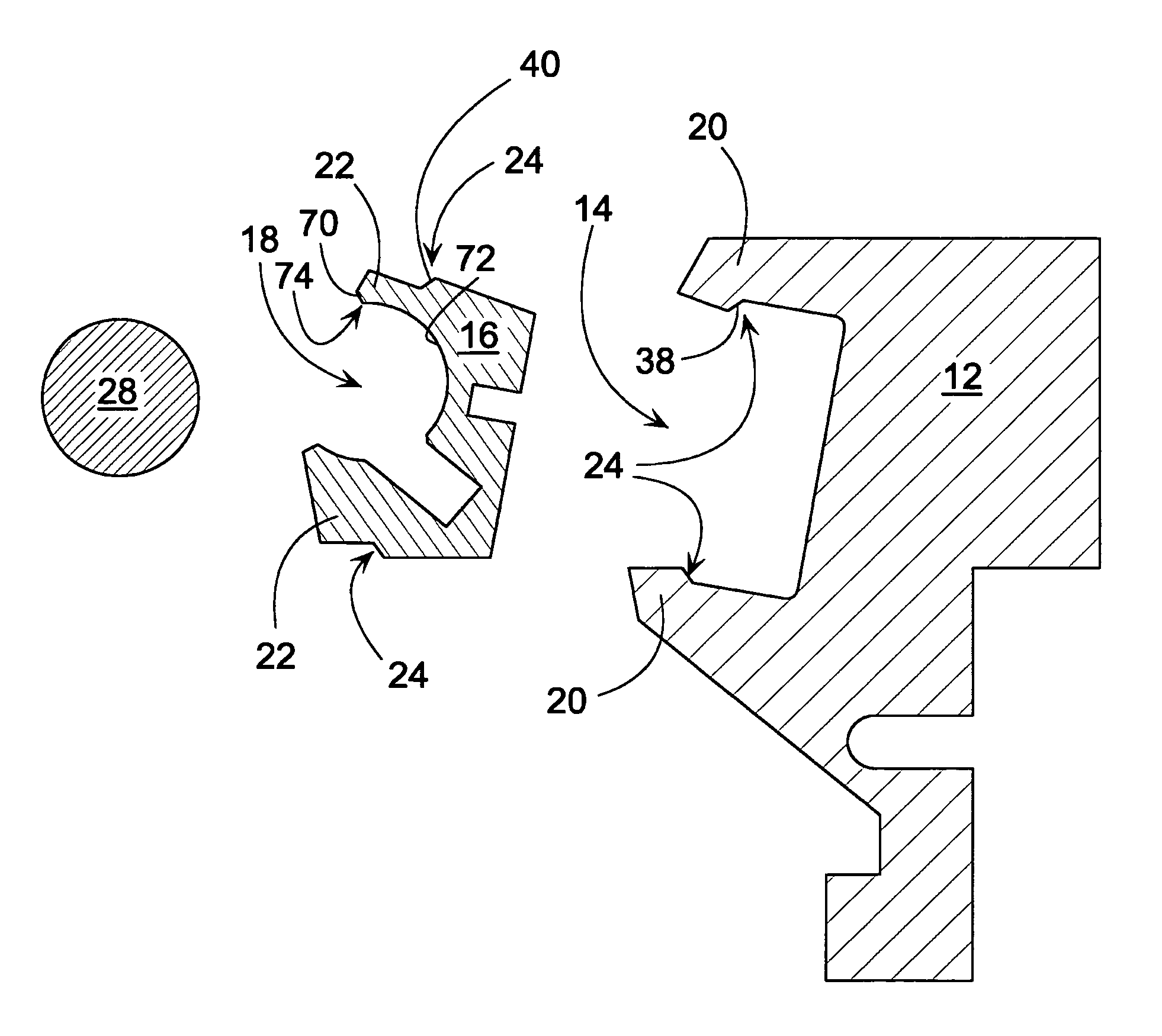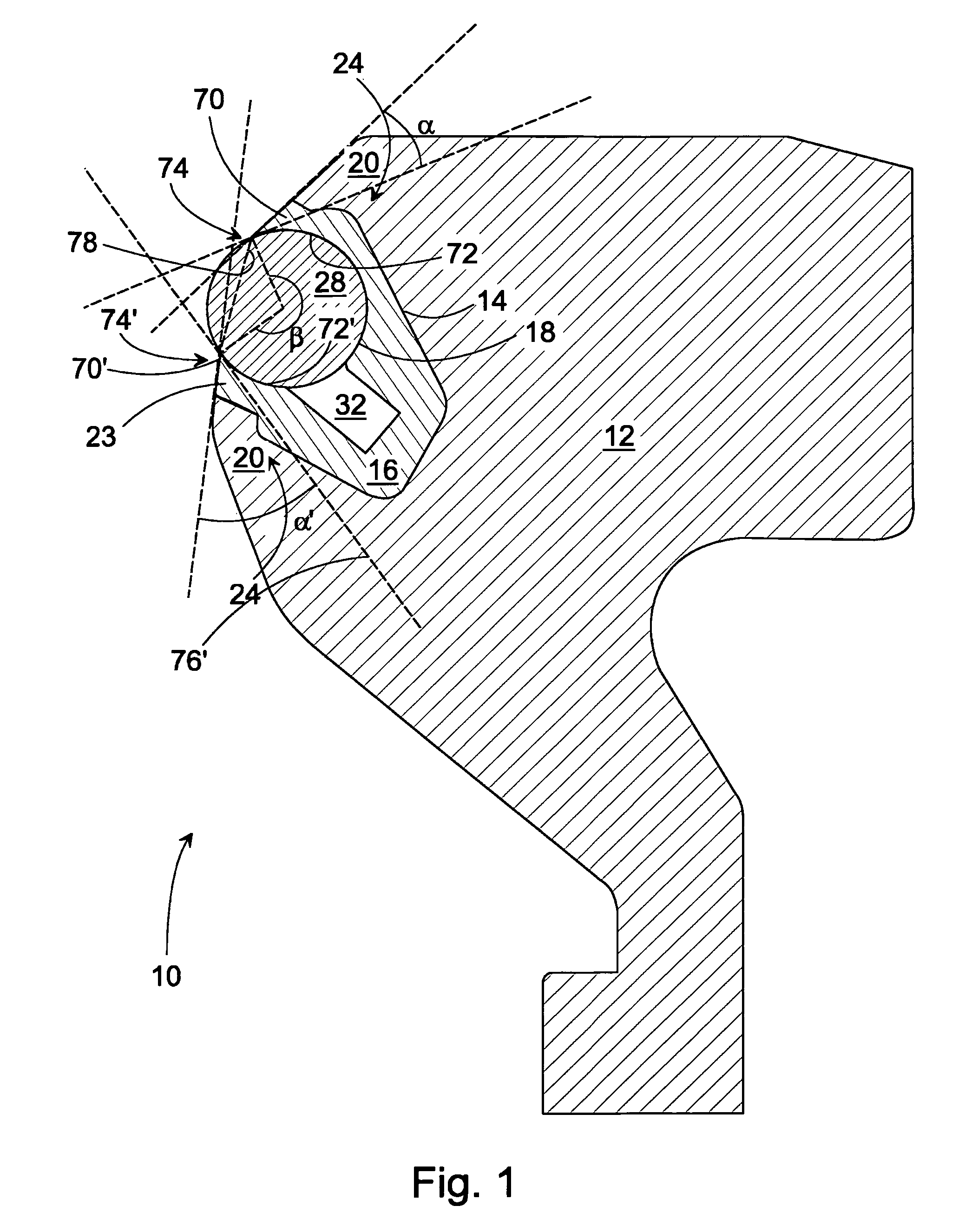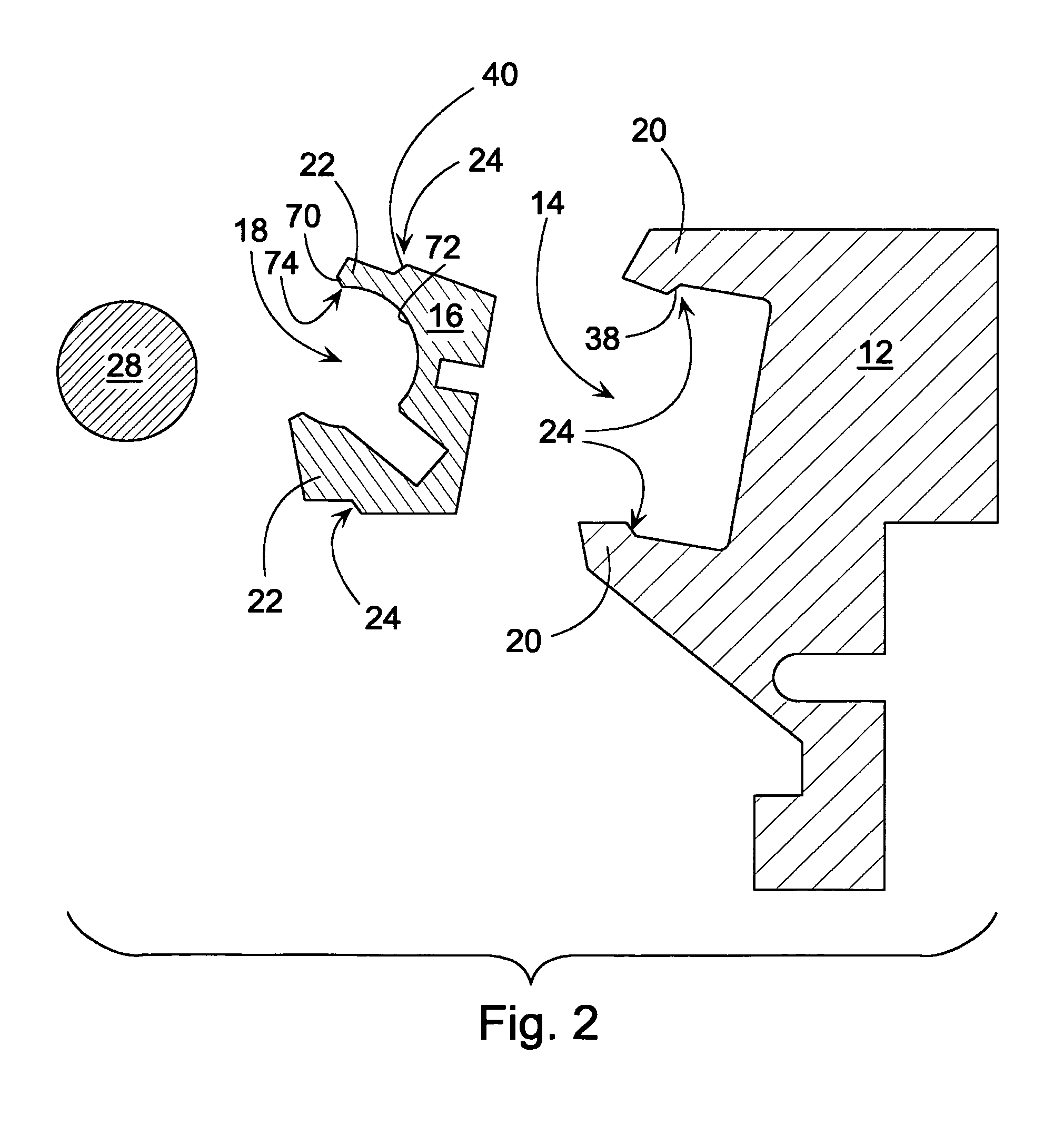Rod cradle, instert to be used in a rod cradle, and method for inserting a rod in a rod cradle
a technology of rod cradle and rod cradle, which is applied in the direction of superimposed coating process, liquid/solution decomposition chemical coating, manufacturing tools, etc., can solve the problems of inability to meet the requirements of production, so as to improve the retention simple and reliable operation, and ensure the effect of insert and rod in the groov
- Summary
- Abstract
- Description
- Claims
- Application Information
AI Technical Summary
Benefits of technology
Problems solved by technology
Method used
Image
Examples
Embodiment Construction
[0035]FIG. 1 shows one rod cradle 10 according to the prior art. The rod cradle 10 includes a frame profile 12 equipped with an insert groove 14. An insert 16, equipped with a rod groove 18, and a rod 28 and locking elements 24 are fitted to the frame profile 12. The locking of the insert 16 to the frame profile 12 takes place using these locking elements. At the sides of the insert groove 14 in the frame profile 12 there are edges 20. At the sides of the rod groove 18 there are lips 22 corresponding to them. The lips 22 include a vertex 74, which is the extreme point of contact with the rod, i.e. the point after which the insert is not in contact with the rod. The lips 22 also include a cover surface 72, 72′ which is in contact with the rod 28, when the rod 28 is in the rod groove 18. In addition, the lips 22 include a vertex surface 70, 70′, which separates from the cover surface 72, 72′ at the vertex 74, 74′. In the solution according to the prior art, the rod is first placed in ...
PUM
| Property | Measurement | Unit |
|---|---|---|
| angle | aaaaa | aaaaa |
| angle | aaaaa | aaaaa |
| angle | aaaaa | aaaaa |
Abstract
Description
Claims
Application Information
 Login to View More
Login to View More - R&D
- Intellectual Property
- Life Sciences
- Materials
- Tech Scout
- Unparalleled Data Quality
- Higher Quality Content
- 60% Fewer Hallucinations
Browse by: Latest US Patents, China's latest patents, Technical Efficacy Thesaurus, Application Domain, Technology Topic, Popular Technical Reports.
© 2025 PatSnap. All rights reserved.Legal|Privacy policy|Modern Slavery Act Transparency Statement|Sitemap|About US| Contact US: help@patsnap.com



